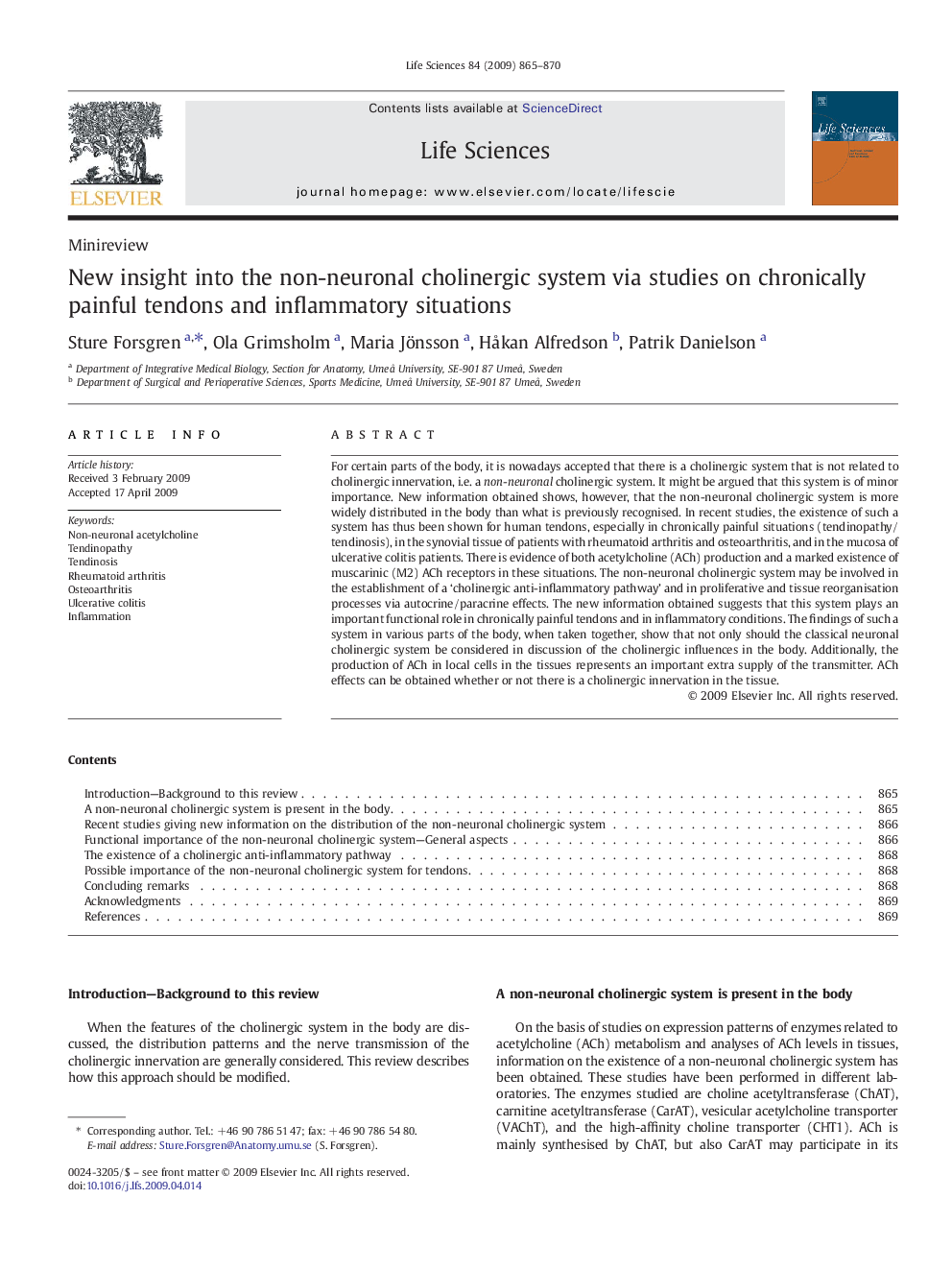| Article ID | Journal | Published Year | Pages | File Type |
|---|---|---|---|---|
| 2552783 | Life Sciences | 2009 | 6 Pages |
For certain parts of the body, it is nowadays accepted that there is a cholinergic system that is not related to cholinergic innervation, i.e. a non-neuronal cholinergic system. It might be argued that this system is of minor importance. New information obtained shows, however, that the non-neuronal cholinergic system is more widely distributed in the body than what is previously recognised. In recent studies, the existence of such a system has thus been shown for human tendons, especially in chronically painful situations (tendinopathy/tendinosis), in the synovial tissue of patients with rheumatoid arthritis and osteoarthritis, and in the mucosa of ulcerative colitis patients. There is evidence of both acetylcholine (ACh) production and a marked existence of muscarinic (M2) ACh receptors in these situations. The non-neuronal cholinergic system may be involved in the establishment of a ‘cholinergic anti-inflammatory pathway’ and in proliferative and tissue reorganisation processes via autocrine/paracrine effects. The new information obtained suggests that this system plays an important functional role in chronically painful tendons and in inflammatory conditions. The findings of such a system in various parts of the body, when taken together, show that not only should the classical neuronal cholinergic system be considered in discussion of the cholinergic influences in the body. Additionally, the production of ACh in local cells in the tissues represents an important extra supply of the transmitter. ACh effects can be obtained whether or not there is a cholinergic innervation in the tissue.
